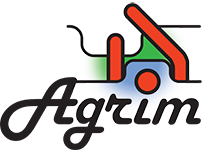Lean in High-Tech

In the fifties of the last century Toyota started developing the Toyota Production System which was described later in a study of the M.I.T. as Lean Manufacturing in “The Machine That Changed the World” from Womack, Jones & Roos.

The Lean principles were further refined and generalized in “Lean Thinking” of Womack & Jones. These principles are:
- Supply value for your customer
- Identify the Value Stream
- Create Flow
- Apply Pull
- Strive for Perfectione

The way this is realized is as least as important, as described e.g. by Liker in “The Toyota Way”. My former colleague Eef Oom (Blom Consultancy) summarized it as:
- Visualize losses
- Improve in teams
- Organize by processes
- Anchor improvements by standardisation
- Make people champions!
 The manager plays an essential role in continuous improvement. This is described in an entertaining way by Ballé in his Lean Novel “The Lean Manager”. It describes i.a. four main behavioral aspects for managers:
The manager plays an essential role in continuous improvement. This is described in an entertaining way by Ballé in his Lean Novel “The Lean Manager”. It describes i.a. four main behavioral aspects for managers:
- Go See: Go to the shop floor and look for yourself
- Ask Why: Keep asking the five times why to find root causes
- Show Respect: stimulate your coworkers good intentions
- Display Results: Show everybody your successes and improvement areas

Lean is not only for established companies, also startups can benifit from Lean methods, as described by Eric Ries in The Lean Startup:
- Vision: Scientific Methods
- Steer: create Feedback loops
- Accellerate: Optimization of building-measuring-learning
Nowadays the lean principles are widely distributed in the industrial world and they are applied more and more in other areas, like healthcare and government. Also in the High Tech industry “Lean” is frequently used, both in production as in development and for startups.
In High Tech the primary process of companies is much more the development of new products than producing these products. Whether we deal with advanced equipment (ASML, Philips Healthcare) or devices (IC’s, MEM’s, sensors, and displays), bringing new generations to market fast and with high quality (Time to Market) frequently determines success. And especially these development processes contain a lot of waste, mainly there where departments have to cooperate.
Mapping the development process, attacking the main losses in teams with Kaizen events and standardizing het way of working (not an easy task with these stubborn engineers!) gives ownership and enthusiasm to the R&D personnel, and with that higher quality and shorter throughput times of development processes.

